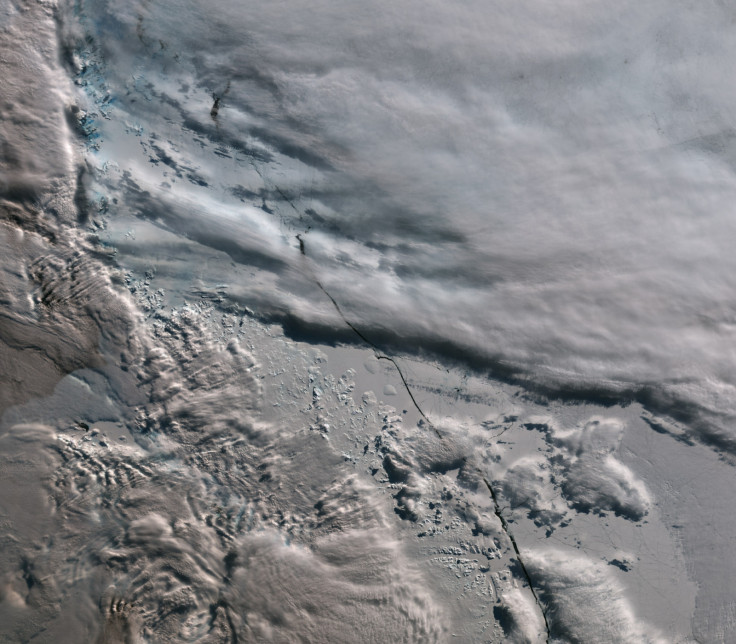One trillion tonne super iceberg breaks off from Antarctica
Before the ice broke off, the crack in Larsen C could be seen from space.
A part of the ice sheet thought to be a quarter of the size of Wales - an area of roughly 6,000 sq km - has broken off from west Antarctica.
An ominous crack has been working its way across the Larsen C ice sheet for a distance of 120 miles. Scientists have been monitoring it closely for several years, and now it seems that it has finally broken off.
It's not yet known whether the 200 metre thick ice is in one piece – which could make it one of the largest ever icebergs – or if it has splintered into many fragments. Data from before the calving event suggests that it may not have been a "clean break", scientists from Project MIDAS announced on twitter.
Observations on the 24 and 27 June suggested that a break was imminent.
"The speed of the ice has really picked up. We don't know why, but it is probably the combined effect of wind and tide," Adrian Luckman of MIDAS told IBTimes UK at the time.
The calving event was "unusually large", and will leave the Larsen C ice shelf at its smallest size ever recorded. Iceberg calving is an ordinary part of the life cycle of ice in Antarctica, as ice flowing from the mainland pushes the sheet out into the warmer ocean, where it eventually breaks off.
However, the speed at which sea ice is being lost across the polar regions – particularly Greenland – is being accelerated by climate change, which is directly related to the carbon emissions from human activities.
The vast majority of the planet's fresh water is locked up in the ice of Antarctica. As the ice sheets begin to melt, sea levels are set to rise. However, the consequences of this iceberg calving event alone will not be dramatic.
Breaking news! The iceberg has fully detached from Larsen C - more details to follow soon pic.twitter.com/pdSxDuAGjR
— Project MIDAS (@MIDASOnIce) July 12, 2017
"There will be no immediate sea level rise – the iceberg is already afloat. There may follow a long – years, decades – period of further slow decay.
"Even if the ice shelf disappears completely, and its feeding glaciers are able to flow faster, the sea level rise contribution from this part of Antarctica is very small – centimeters over decades," said Luckman.
In the wake of the break-off, scientists from the British Antarctic Survey, who collaborated with the MIDAS team, said that the event could change the local environment significantly.
"This story has just got even more interesting. Our glaciologists will now be watching closely to see whether the remaining Larsen C Ice Shelf becomes less stable than before the iceberg broke free, and our biologists will be keen to understand how new habitats formed by the loss of the ice are colonised," said BAS remote sensing analyst Andrew Fleming.
Professor David Vaughan, glaciologist and director of science at BAS, added:
"Larsen A and B ice shelves, which were situated further north on the Antarctic Peninsula, collapsed in 1995 and 2002, respectively. This resulted in the dramatic acceleration of the glaciers behind them, with larger volumes of ice entering the ocean and contributing to sea-level rise. If Larsen C now starts to retreat significantly and eventually collapses, then we will see another contribution to sea level rise."

© Copyright IBTimes 2025. All rights reserved.






















